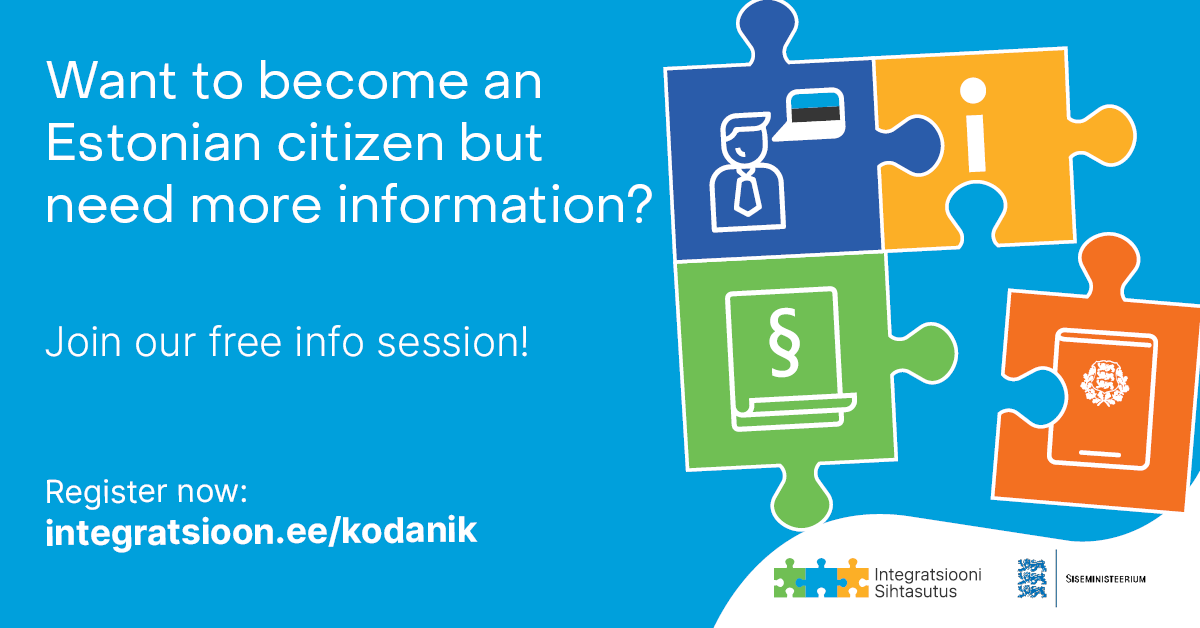We offer free language courses and training courses on the Constitution and the Citizenship Act for people who wish to become Estonian citizens. This year, we will be organising information sessions to introduce our services in more detail and answer questions from interested parties.
Upcoming Info Sessions:
- November 27 at 10:00 (online, in Russian). Registration is OPEN in self-service.
- December 11 at 10:00 (online, in English). Registration is OPEN in self-service.
If you are not yet a user of our self-service environment, please first create your profile at the following link:
https://iseteenindus.integratsioon.ee/
You can learn more about language learning to apply for Estonian citizenship at:
https://integratsioon.ee/en/language-exam
You can read more about training courses on the Constitution of the Republic of Estonia and the Citizenship Act at:
https://integratsioon.ee/en/citizenship-exam
The materials from the information session will be sent to participants who identified themselves by their full name during the session. They will be sent to the email address provided during registration in the self-service system.

